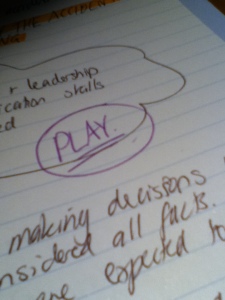
Nants ingonyama bagithi Baba, Sithi uhm ingonyama
(You always got the words wrong, didn’t you.)
The sun dawns over the African landscape, with a single voice crying out in Zulu, joined by others in a chant, deepening into a song that suddenly becomes suspiciously English and Disney-like. Yes, it’s the introduction of Lion King in my head. Only this time, it doesn’t go to a little ball of fluff on Pride Rock, it’s the circle of life of…
my laptop.
Don’t give me a look of disgust. It’s true, machines and systems have life cycles too! Let me explain.
Concept to detailed design:
This stage involves the lovely people at Hewlett-Packard sitting down and deciding how they want to design my laptop and according to their website (http://www8.hp.com/us/en/hp-information/environment/mobile-design.html), making it easy to recycle, non-toxic, energy saving and environment-conserving. At this stage my lovely laptop is no more than a few words on paper and an idea in someone’s head- although you should never underestimate the power of that.
Things that can go wrong at this level include designing it so that it is difficult to use (such as placing the trackpad in such a way that the mouse moves when the user is trying to type, or making the keys too big or too small, or not giving it enough memory or battery or hard drive space, or making it too heavy). These will impact on later stages of the cycle, so it’s an important formative stage.
Construction:
At this stage the idea becomes a tangible, physical thing, and should be constructed with maximum efficiency and care, especially with something of value. My laptop for instance has been constructed with a minimum of number and different types of materials, and without using substances that could pose a risk to workers constructing it.
Failures here can occur if a laptop is mistakenly put together incorrectly on the assembly line, or a part is faulty from the manufacturers. Even if your planning and design is flawless, this can still happen through errors.
Commissioning:
The initial rollout of the machine: it involves logistics, prices, politics with stores that may sell this laptop, and so on. Failures can happen when a region fails to receive the laptops in a timely manner because transport was handled inefficiently, or a store is not on good terms with HP, or the RRP (recommended retail price) doesn’t end up making any real profit. The initial days and weeks of commissioning something like a laptop also tend to reveal the bugs that designers and testers may have missed.
Operating/Maintaining:
This is the part where the real user finally makes an entrance! As I’m typing this on my lovely laptop, I can safely say I don’t have any problems with it (besides the fact that the battery runs out in a few hours due to accidentally leaving it plugged in for longer than it needs every so often). It beeps when it needs plugging in, but it would be nice to have a feature that makes a noise when it’s fully charged. In any case, I may not have a problem with operating or maintaining it, but never fear, failures can still occur. These could look something like non-tech-savvy users thnking it’s too complicated, HP having to respond to and fix bugs, as well as providing support and software updates, and the user having problems with operation (or maybe even battery life).
Decommissioning:
Sadly, every laptop meets its end. It involves HP removing the design from production, communicating to the stores that the product has been deleted, and finishing distribution of existing stock. On the other end, when the user’s laptop is less than adequate for normal use, they may recycle it, shoot it, smash it or do whatever floats their boat, and then get a new one. Failures and difficulties at this level include HP failing to communicate with stores, users not wiping the hard drive in which case identity theft may be possible, and incorrect or difficult recycling at the plant.

For all you visual kids.
So there you have it, a whole system life cycle. Fairly complicated and taken for granted in the case of most things we use and handle, every day.
I just hope the end of my laptop doesn’t involve it hanging off my desk by its non-slip pads while its successor snarls “Long live the King.”






